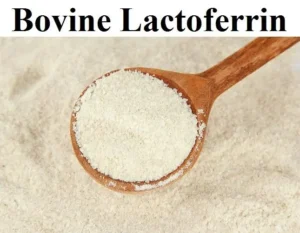The health benefits of mallow herb

The health benefits of mallow herb
The leaves and flowers of mallow contain mucilage, flavonoids, tannins, pectin, and anthocyanins such as malvin.
Mucilages have anti-inflammatory properties and produce a protective layer on the gastric mucosa, treat bacterial diarrhea and infections of the throat.
Mallow flower mucilage is very effective in treating cough, colds, swelling of the mouth and throat. Mallow is also used to heal wounds.
It is recommended for people with constipation and stomach and intestine issues.
Chemical composition
The leaves of the Malva sylvestris or mallow contain mucilage (6 to 8% galacturoneramannan and Arabinogalactans), flavonoids ( Hypolaetin-3-glucoside, Gossypetin-3-glucoside). Flowers contain mucilage (10% galacturonormans and arabinogalactans) and anthocyanins such as Malvin. In addition, mallow contains tannins, sugar, oxalate, resins and pectic substances.
The amount of tannin of the mallow is 1.86-2.18 and 0.86-1.18 mg/g dry matter for leaves and flowers, respectively. Also, phenolic compounds of mallow are 11.82- 15.11 and 1.40-1.97 mg/g and flavonoids content is 21.85-27.18 and 3.50-4.95 mg/g for leaves and flower, respectively.
Effective compounds
Mucilages; carbohydrate compounds with very complex chemical structure, that dissolved in water and after absorbing water swollen and pasty or viscous solutions is formed with laxative property.
In addition, mucilages have anti-inflammatory properties and produce a protective layer on the gastric mucosa, so acids and salts do not contact with inflamed parts of digestive tract. Mucilages can also be used to treat bacterial diarrhea and infections of the throat.
Other active ingredients of mallow are pectin and pectic substances. Pectic substances are a group of very complex polysaccharides that are soluble in hot water and are present in the outer (primary) wall and intracellular layers of plants. Pectin is a major member of this group. Pectic materials have significant gelatinous properties.

Medicinal properties of mallow
Its main therapeutic properties are the treatment of inflammations of the mucous of the mouth and throat, which causes cough due to dryness. A mild astringent is used in the treatment of stomach disorders, asthma, runny nose, infection and in high doses as a laxative. It is traditionally used for bladder pain and treatment of wounds, pimples and eczema.
Mallow flower is very effective in treating cough, colds, swelling of the mouth and throat because of mucilage. Mallow is also used to heal wounds.
It is recommended for people with constipation and stomach and intestine issues.
Flower tea is one of the anti cough medicines It opens the liver ducts and increases urination.
Antimicrobial effects
Studies have shown that methanolic extract of mallow has an antimicrobial effect on Bacillus pomilis, Escherichia coli and Staphylococcus aureus, Pseudomonas aeruginosa , Bacillus cereus, Klebsiella pneumoniae, Staphylococcus epidermidis, Pseudomonas aeruginosa and Bacillus anthracis.
Antioxidant effect
Mallow is widely used in traditional medicine to treat internal and external inflammation and inflammatory-related diseases such as rheumatism. It is also an antioxidant that scavenges free radicals. Leaves are rich in antioxidant compounds such as phenol, flavonoids, carotenoids and tocopherol.
Therapeutic prescriptions
For kidney stones, should boil 100 grams leaves in one and half liters water and after 2 to 3 minutes boiling; strain it and add a tablespoon olive oil and take it before each meal.
Also, for pain of kidney stone, 100 grams leaves with 100 grams chamomile flowers should be boiled, then a tablespoon olives oil added and drink before each meal. 2 grams leave boil for five minutes or pour two grams in a glass of boiling water and after fifteen minutes strain and drink.
Pour a tablespoon of leave in a teapot and let it brew for 10 minutes.
Because flower contains mucilage, its tea cures cough and relieves hoarseness.
Pour five grams leaves in a glass of cold water and boil it for five minutes, or pour the same amount of leaves in a glass of boiling water and strain after fifteen minutes that used three to four times a day. In addition, if you add a little honey, its properties will be multiplied for treatment of anemia.
Mallow in traditional medicine
In traditional medicine, it has been said that this plant is mild and are used to dilute concentrated mixtures and to moderate very dilute mixtures.
Boiled mallow is used to treat coughs, dysentery, bladder infections, bronchitis and vomiting and to relieve irritation of the urinary tract.
If you gargle the boiled leave in the mouth and throat, it will remove the mucus that irritates the throat and relieves sore throat.
The leave is effective in removing facial pimples and burns. 300 grams of leaves are boiled in one liter water and take as a painkiller.
Important notes
-To get benefits from the properties of mallow, do not boil this plant for more than five minutes, and press the flowers well until all the mucilage comes out.
-People with a history of allergies to herbs should be cautious about eating.
-Patients with diabetes or people whose body is sensitive to changes in blood sugar, should consume this plant more carefully, because it may cause a decrease in blood sugar.
References
Zohori, H. 2003. Encyclopedia of Medicinal Plants, Tahsin Publications, Second Edition, 2011, pp. 131-130.
Kianmehr, A. 2007. Knowledge of medicinal plants. Abijah Publishing Center, first edition. pp. 46-45.
Omid Beigi, R. 2011. Production and processing of medicinal plants.Tarbiat Modares pubication
Tabarak Reza , Yousefi Zainab, Asadi Qarna Hussein Ali. 2012. Chemical composition and antioxidant properties of cottage cheese (Malva sylvestris L.) J R esearch in agricultural science. 8, 1; 59 -68.









1 thought on “The health benefits of mallow herb”